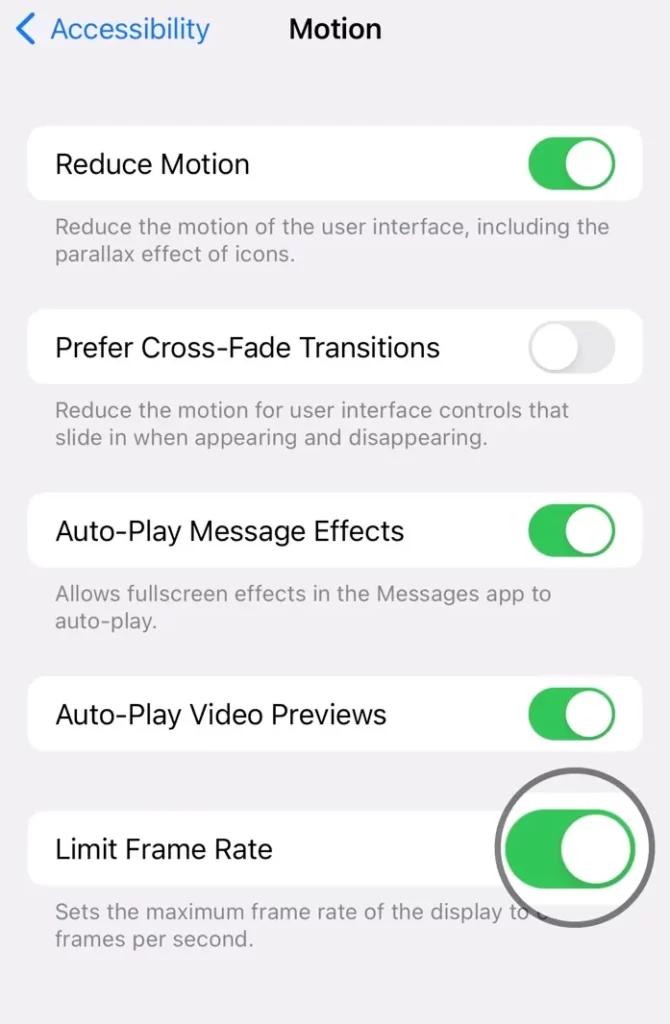Want to make your iPhone 14 Pro battery last longer? Check out our guide on how to optimize your phone’s battery performance by limiting the frame rate. You’ll be surprised at how much of a difference it can make!
Prior to the iPhone 15’s release, there was a noticeable stir of discontent among iPhone 14 Pro users. They found their battery health deteriorating at an alarming rate, a concern that emerged in mid-August. This prompted me to look into the state of my own iPhone 14 Pro’s battery.
In contrast to many other users who experienced a rapid 10% drop in battery health within a year, my battery remained at a solid 100%. Remarkably, even with constant usage, my iPhone’s battery lasted well over a day, eliminating the need for nightly recharges.
I described the methods I employ to ensure my iPhone’s battery longevity. These include disabling the Always-On display feature and adopting optimized charging to prevent it from reaching a full 100% charge.
However, in October, I made an interesting discovery. I had unintentionally left a setting unchanged, which might explain my impressive battery life and health. About a year ago, I had deactivated the ProMotion feature, restricting the dynamic refresh rate to 60Hz. It was initially a test for work, and I had simply forgotten to switch it back.
Back in late September 2022, I shared various tips and tricks to enhance iPhone 14 Pro battery life. One of these tips centered around ProMotion.
I outlined how you could lower the frame rate to 60Hz on your iPhone to conserve energy. As a quick reminder, the iPhone 14 Pros and their successors are equipped with dynamic 120Hz refresh rates (ProMotion). This feature allows the refresh rate to vary between 1Hz and 120Hz, depending on the apps you’re using. Opting for a frame rate limit will keep it fluctuating, but only between 1Hz and 60Hz.

The absence of ProMotion on the iPhone 12 Pros was primarily due to concerns regarding battery life. Back then, Apple lacked chips as efficient as the A16 Bionic and couldn’t utilize OLED panels that supported dynamic refresh rates. At least, that’s what the rumors suggested.
In contrast, the iPhone 15 and 15 Plus boast the highly efficient A16 chip but are still limited to a 60Hz refresh rate. This restriction is tied to the pricing of the base models.
Returning to the topic of tips and tricks, I initially set the Limit Frame Rate to a maximum of 60Hz to capture a screenshot. However, I got curious about whether I could discern the variance between 60Hz and 120Hz. So, I decided to experiment with the iPhone at 60Hz for a few days to evaluate how it felt. It seems that I may have unintentionally left the Limit Frame Rate option enabled in the Accessibility settings.
So, I’ve been using the iPhone 14 Pro with the dynamic refresh rate set at 60Hz for a year now. This tweak has likely contributed to better battery life and possibly safeguarded the battery’s health. Charging less frequently probably helped reduce battery health degradation.
I stumbled upon this setting by accident a few days ago, while I was contemplating whether to enable it. Interestingly, I also noticed a decline in my iPhone 14 Pro’s battery life following the iOS 17 update. But that’s a story for another time.
My experience over the past year reinforces a point I made shortly after purchasing the iPhone 14 Pro. In hindsight, I could have opted for the more affordable non-Pro version without hesitation.
While I might not have initially noticed that I wasn’t benefiting from the full 120Hz experience during my first year with the iPhone 14 Pro, there was one incident when I encountered a screen stutter. It occurred on a scorching summer day when the iPhone overheated while wirelessly charging. The A16 Bionic chip was throttled and remained so for several hours after I unplugged the phone. Strangely, I didn’t think to check the screen settings but instead ran benchmark tests. A simple restart resolved the issue, and the scrolling stutter vanished. This incident led me to believe there might be an issue with the chip.
Since the revelation of my ProMotion mishap, I’ve contemplated enabling the feature again. However, given that I hadn’t realized I was using a 60Hz experience in the first place, I’ve decided not to bother. I’ll gladly settle for the improved battery life instead.







